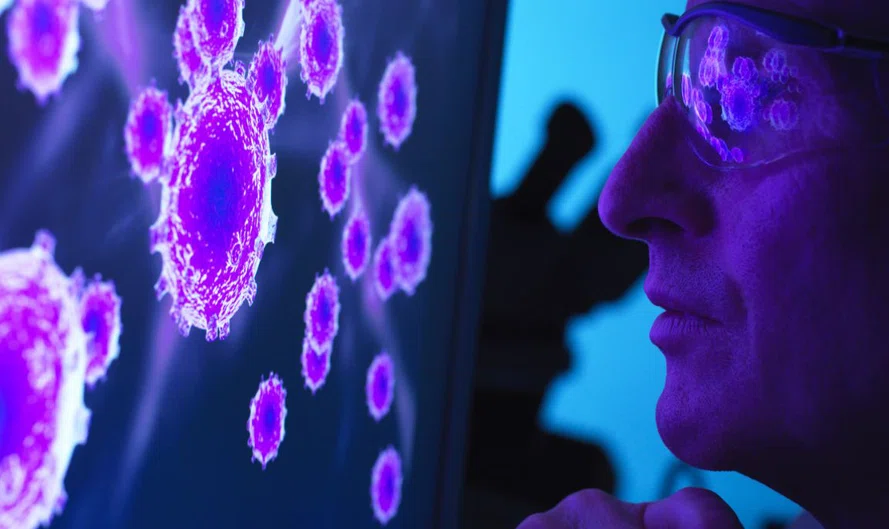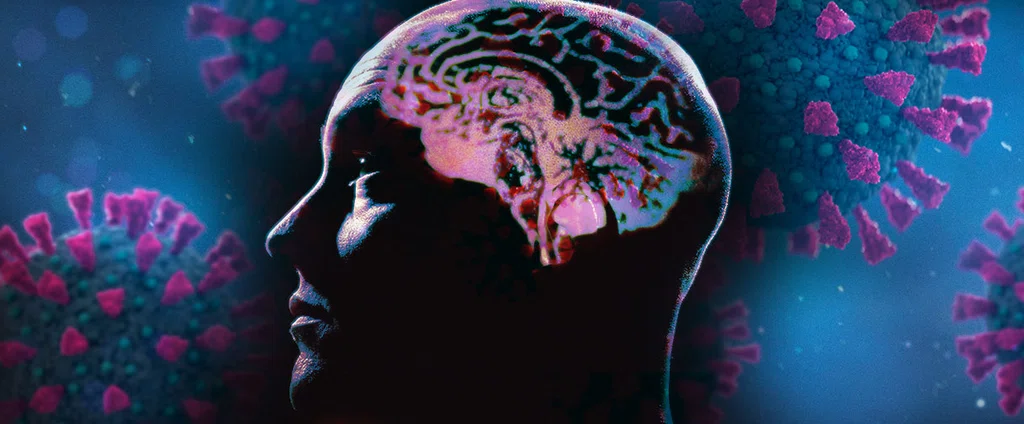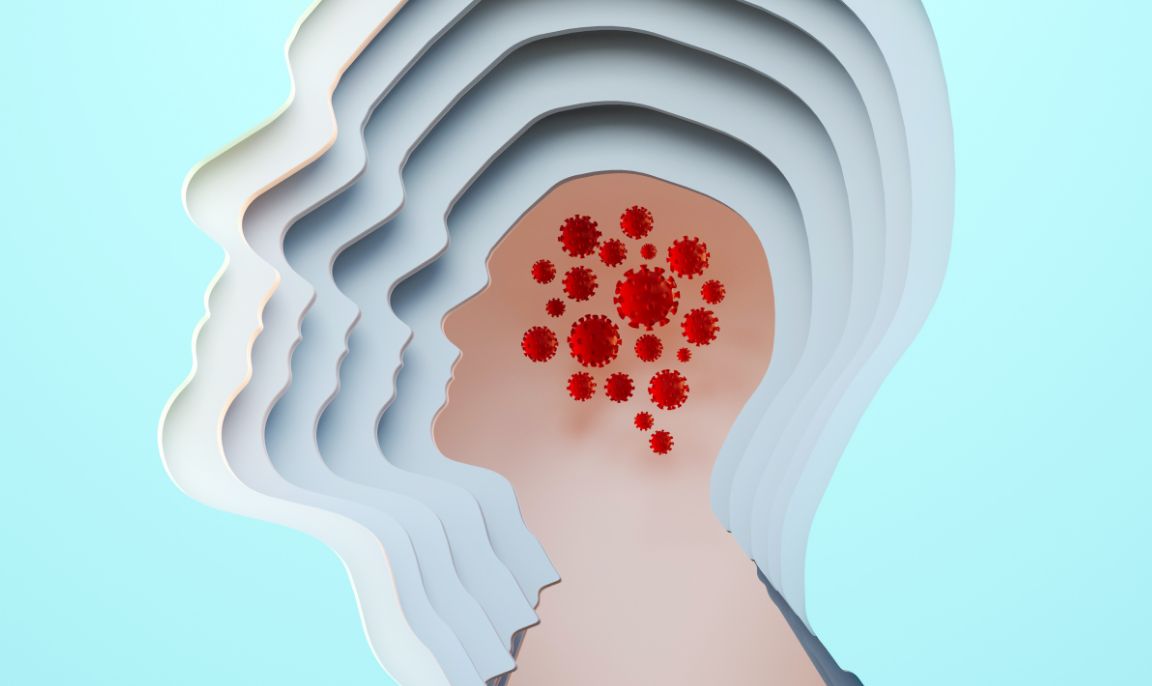
President’s Letter
2023 Metrics
Cycle of Translation
Visionary Gifts

Discovery to Clinic

Innovative Education

Translational Luminaries
Introduction
Jerold B. Katz Academy of Translational Research
Infectious Diseases Research Fund
Houston Methodist Dr. Mary and Ron Neal Cancer Center
Ann Kimball and John W. Johnson Center for Cellular Therapeutics at Houston Methodist
The Food & Health Alliance within the Houston Methodist Lynda K. and David M. Underwood Center for Digestive Disorders, Immunology Center and the Fondren Inflammation Collaborative
Houston Methodist Cockrell Center for Advanced Therapeutics
Paula and Joseph C. “Rusty” Walter III
Translational Research Initiative
COVID-19 Studies
Outcomes Research
Restorative Medicine
Houston Methodist Advances Research into Neural Prosthetics
Noninvasive Spinal Stimulation Works to Restore Movement After Spinal Cord Injury
An Innovative Approach to Treat Even the Most Stubborn-to-Heal Fractures
Cell Encapsulation May Hold the Key to Preventing Cell Transplant Rejection
Houston Methodist, Rice University, Baylor College of Medicine Design Noninvasive Tech to Help Remove Brain’s Metabolic Waste
Houston Methodist Investigators Nanotechnology Investigators Awarded Prestigious Grants from the Department of Defense
Precision Medicine
Cancer Cell Type (Seed) and Tumor Microenvironment (Soil) Control Therapeutic Antibody Delivery and Efficacy
Novel Drug Combination Can Target Triple-Negative Breast Cancer for Treatment
A Houston Methodist and Purdue University Breakthrough May Result in a More Effective Tuberculosis Vaccine
Importance of the Coronary Artery Calcium Score in Risk Assessment and Prevention of Atherosclerotic Cardiovascular Disease
New Virtual Intensive Care Unit Simultaneously Improves Patient Care and Bed Capacity
result
Introduction
Joint Weill Cornell–Houston Methodist Academic Institute Doctoral Program Welcomes its Inaugural Class
Visionary EnMed Program Soars to New Heights
Neural Control of Organ Degeneration and Regeneration (NeuralCODR) Training Program
Faculty and Research Development
Graduate Medical Education



Science in Service
of
Medicineresult
President's letter
2021 Metrics
Cycle of Translation
Visionary Gifts of Hope


Introduction

Ann Kimball and John W. Johnson Center for Cellular Therapeutics at Houston Methodist

Houston Methodist Dr. Mary and Ron Neal Cancer Center

The Food & Health Alliance within the Houston Methodist Lynda K. and David M. Underwood Center for Digestive Disorders, Immunology Center and the Fondren Inflammation Collaborative

Houston Methodist Cockrell Center for Advanced Therapeutics

Paula and Joseph C. “Rusty” Walter III Translational Research Initiative

Jerold B. Katz Academy of Translational Research

Infectious Diseases Research Fund

From Discovery to Clinic


What is "Discovery to Clinic"?

Restorative Medicine


Houston Methodist Advances Research into Neural Prosthetics

Noninvasive Spinal Stimulation Works to Restore Movement After Spinal Cord Injury

An Innovative Approach to Treat Even the Most Stubborn-to-Heal Fractures

Cell Encapsulation May Hold the Key to Preventing Cell Transplant Rejection

Houston Methodist, Rice University, Baylor College of Medicine Design Noninvasive Tech to Help Remove Brain’s Metabolic Waste

Houston Methodist Investigators Nanotechnology Investigators Awarded Prestigious Grants from the Department of Defense

Precision Medicine


Cancer Cell Type (Seed) and Tumor Microenvironment (Soil) Control Therapeutic Antibody Delivery and Efficacy

New Virtual Intensive Care Unit Simultaneously Improves Patient Care and Bed Capacity

Novel Drug Combination Can Target Triple-Negative Breast Cancer for Treatment

A Houston Methodist and Purdue University Breakthrough May Result in a More Effective Tuberculosis Vaccine

Importance of the Coronary Artery Calcium Score in Risk Assessment and Prevention of Atherosclerotic Cardiovascular Disease

Translational Luminaries


New Insights on Long-range Effects of COVID-19

When the COVID-19 pandemic arrived, the scientific and medical communities had limited information about how to treat people infected with the novel virus. Even so, Houston Methodist was well positioned to meet the urgent need for diagnostics, treatments, vaccines and critical medical technologies.
Throughout the pandemic, our research groups continued their studies without interruption. In fact, Houston Methodist researchers submitted 32 more funding proposals during 2020 than they did the previous year. Many investigators quickly pivoted their research focus to COVID-19-related challenges by participating in more than 50 preclinical studies and clinical trials that resulted in more than 170 COVID-19-related published journal articles and 16,000 media placements.
01
Houston Methodist Researchers Identify More Than 50 Long-term Effects of COVID-19
Share this story

Lingering symptoms range from mild to debilitating and last for weeks to months after recovery
Sonia Villapol, PhD
To assess these long-term effects of COVID-19, the research team identified a total of 18,251 publications, of which 15 met the inclusion criteria for their study. The peer-reviewed studies they analyzed were conducted in the United States, Europe, United Kingdom, Australia, China, Egypt and Mexico and consisted of data published before 2021, following patient cohorts ranging from 102 to 44,799 adults aged 17 to 87 years. The studies collected information from self-reported patient surveys, medical records and clinical evaluation, with post-COVID follow-up time ranging from 14 to 110 days. Patients hospitalized for COVID-19 made up 40% of the studies, with the rest following a mix of mild, moderate and severe COVID-19 cases.
As COVID-19 cases continue to periodically rise, some patients experience symptoms long after recovering from the acute infection, according to a Houston Methodist study recently published in Nature’s Scientific Reports. Lead author Sonia Villapol, PhD, an assistant professor of neurosurgery at Houston Methodist's Center for Neuroregeneration, and her collaborators detected more than 50 long-term effects of COVID-19 among the 47,910 patients included in the analysis. The most common of these lingering symptoms, which range from mild to debilitating and last weeks to months after initial recovery, are fatigue at 58% followed by headache (44%), attention disorder (27%), hair loss (25%), shortness of breath (24%), loss of taste (23%) and loss of smell (21%). Other symptoms were related to lung disease such as cough, chest discomfort, reduced pulmonary diffusing capacity, sleep apnea and pulmonary fibrosis; cardiovascular issues, such as arrhythmias and myocarditis; and unspecific problems, such as tinnitus and night sweats. The researchers were surprised to also find a prevalence of neurological symptoms such as dementia, depression, anxiety and obsessive-compulsive disorders.
The most common lingering symptoms of COVID-19 , which range from mild to debilitating and last weeks to months after initial recovery.
Fatigue
58%
Headache
58%
Attention
Disorder
44%
Hair Loss
27%
Shortness
of Breath
44%
Loss of Taste
27%
Loss of Smell
23%
The research team performed a systematic review and meta-analysis of these studies to estimate the prevalence of all the symptoms, signs or abnormal laboratory parameters extending beyond the acute phase of COVID-19. They measured several biomarkers, including abnormal chest x-ray or computed tomography scan, blood clot risk, presence of inflammation, anemia, and indicators of possible heart failure, bacterial infection and lung damage. They found that 80% of recovered adults had at least one long-term symptom lasting weeks to months after acute infection with mild, moderate or severe COVID-19. In total, the team identified 55 persistent symptoms, signs and abnormal laboratory results, with most of the lingering effects similar to the symptomatology developed during the acute phase of COVID-19. Identifying these same persistent effects across several countries, the researchers say their study confirms that the burden of long COVID is substantial, and they stress the urgency of recognizing these chronic complications, clearly communicating them to the community, and defining therapeutic strategies to avoid long-term consequences from COVID-19. The next phase of their research is focused on determining what makes some individuals more susceptible to long COVID.
Collaborating with Villapol on this study were Sandra Lopez-Leon with Novartis Pharmaceuticals, Talia Wegman-Ostrosky with Instituto Nacional de Cancerología in Mexico, Carol Perelman with National Autonomous University of Mexico, Rosalinda Sepulveda with Harvard T.H. Chan School of Public Health, Paulina A. Rebolledo with Emory University and Angelica Cuapio with Karolinska Institute.
02
Research
COVID-19 Virus SARS-COV-2 Affects the Brain and May Cause Long-range Complications

Mounting evidence suggests that the virus responsible for the COVID-19 pandemic causes neurological complications in addition to the typical respiratory symptoms. An overactive immune response and a genetic component interacting with the virus may be the cause for long-term cognitive problems following COVID-19.
COVID-19, which is predominantly thought to be a respiratory disease, targets the brain as well, directly or indirectly. The virus responsible for COVID-19 – the severe acute respiratory syndrome coronavirus 2 (SARS-COV-2) – is one of several coronaviruses among a family of viruses found in humans, bats and birds. The novel SARS-COV-2 virus affects not only the respiratory system but also multiple organs including the heart, vascular system, digestive system and brain. In a review study published in Molecular Neurobiology, Kenneth Podell, PhD, associate professor of clinical neurology at Houston Methodist, detailed the pathways within the nervous system that are critical in the infection and disease manifestation of SARS-COV-2. This review, performed in collaboration with Elkhonon Goldberg, PhD, director of Luria Neuroscience Institute, New York, sheds light on neurological symptoms, mechanism of infection and long-term implications of COVID-19.

Kenneth Podell, PhD
Commonly, the virus infects cells lining the nasal cavity, but it can also directly invade the brain. According to the Centers for Disease Control and Prevention, common COVID-19 symptoms include fever, cough, shortness of breath, chills, repeated shaking with chills, muscle aches, headache, sore throat, loss of smell and loss of taste. However, in addition to these, SARS-COV-2 causes several neurological symptoms of which headache is the most common. It appears that neurological symptoms are more prevalent in severe COVID-19 cases. Moreover, COVID-19 respiratory symptoms can have an origin in the brain or nervous system.
While neurological and psychological symptoms can occur immediately following recovery in COVID-19 patients, long-term COVID-19 repercussions after recovery (called post-acute COVID-19 syndrome or PACS) may include brain fog, problems concentrating, depression, anxiety and more severe neurodegenerative complications including memory impairment and dementia in older patients. Further, hypoxia, encephalitis and stroke from severe COVID-19 infections can cause long-term and permanent neurocognitive impairment. COVID-19 patients demonstrating neurological symptoms during acute illness may be at particular risk of developing neurodegenerative diseases much later in life.

According to Podell, “The nature and the extent of post-COVID-19 neurocognitive outcomes will likely vary widely, depending on the underlying severity of the acute illness, pathophysiological mechanisms, genetic predisposition, variant of the coronavirus, and will range from short-term subtle to long-term severe. We simply do not have enough experience with the current evolving SARS-COV-2 virus to accurately predict the outcome. The number of individuals suffering from long-term and even permanent cognitive deficits is likely to be significant. Multidisciplinary collaborations involving neurology, neuropsychology, psychiatry and physiatry will be required in the diagnosis and treatment of COVID-19 patients in post-acute and chronic stages of the disease.”

“The nature and the extent of post-COVID-19 neurocognitive outcomes will likely vary widely, depending on the underlying severity of the acute illness, pathophysiological mechanisms, genetic predisposition, variant of the coronavirus, and will range from short-term subtle to long-term severe. We simply do not have enough experience with the current evolving SARS-COV-2 virus to accurately predict the outcome. The number of individuals suffering from long-term and even permanent cognitive deficits is likely to be significant. Multidisciplinary collaborations involving neurology, neuropsychology, psychiatry and physiatry will be required in the diagnosis and treatment of COVID-19 patients in post-acute and chronic stages of the disease.”
Kenneth Podell, PhD
03
Research
Help for Long-COVID May Come From Listening to Your Gut

Two years into the pandemic, there are still several missing pieces to the COVID-19 puzzle. A research team led by Sonia Villapol, PhD, assistant professor of neurosurgery at the Center for Neuroregeneration at Houston Methodist, is diligently working to locate one of these pieces − understanding the phenomenon of long COVID or post-acute sequelae of SARS-CoV-2 infection (PASC), a constellation of lingering symptoms that range from mild to debilitating.
A systematic review and meta-analysis of the long-term effects of COVID-19 by Villapol was published in August 2021 and showed that among 47,910 patients included in the analysis, 80% (95% CI, 65-92) of those with COVID-19 reported one or more persistent symptoms lasting weeks to months following acute infection. Of the 55 identified long COVID symptoms, signs and laboratory parameters, the five most common were fatigue (58%), headache (44%), attention disorder (27%), hair loss (25%) and dyspnea (24%). Loss of smell, lung dysfunction, abnormal chest X-ray/CT and neurological disorders followed closely.

Sonia Villapol, PhD
Villapol’s team is also examining the potential role of the gut microbiome in making individuals more susceptible to long COVID. The intestinal tract is the largest immune organ in the body and houses millions of microbes that are critical for modulating immune response.
Although COVID-19 is primarily a respiratory disease, during early stages of infection many patients experience gastrointestinal symptoms such as nausea, vomiting or diarrhea. Such gastrointestinal changes create an imbalance in gut microflora that can cause the release of proinflammatory cytokines. Villapol’s team will analyze the changes in gut microbiota in patients who tested positive for SARS-CoV-2. Saliva and stool samples will be collected when they test positive and after 2 weeks and 6 months. By providing a snapshot of how the gut microflora changes over time, this research could shed some light on possible associations between gut dysbiosis and long COVID. Once the gut microflora changes are characterized, therapeutic approaches with pre- or probiotics could be used to correct the microbiome imbalance and help mitigate the effects of long COVID.
While the causes of chronic health problems after COVID are still being investigated, Villapol urges clinicians to monitor their patients for signs of long COVID: “Physicians should be aware of the symptoms, signs and biomarkers present in patients previously affected by COVID-19 to promptly assess, identify and halt long COVID-19 progression, minimize the risk of chronic effects and help reestablish pre-COVID-19 health.”
More from Discovery to Clinic














